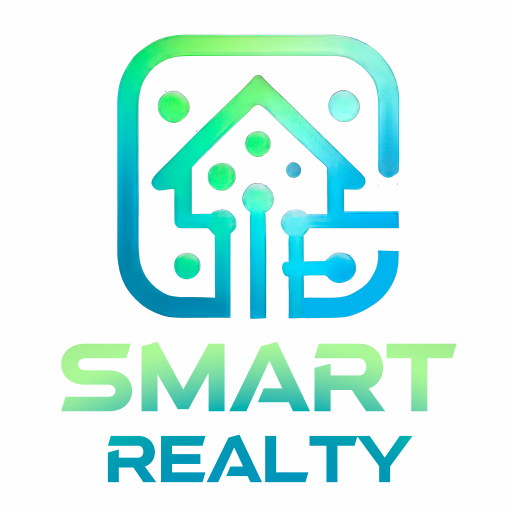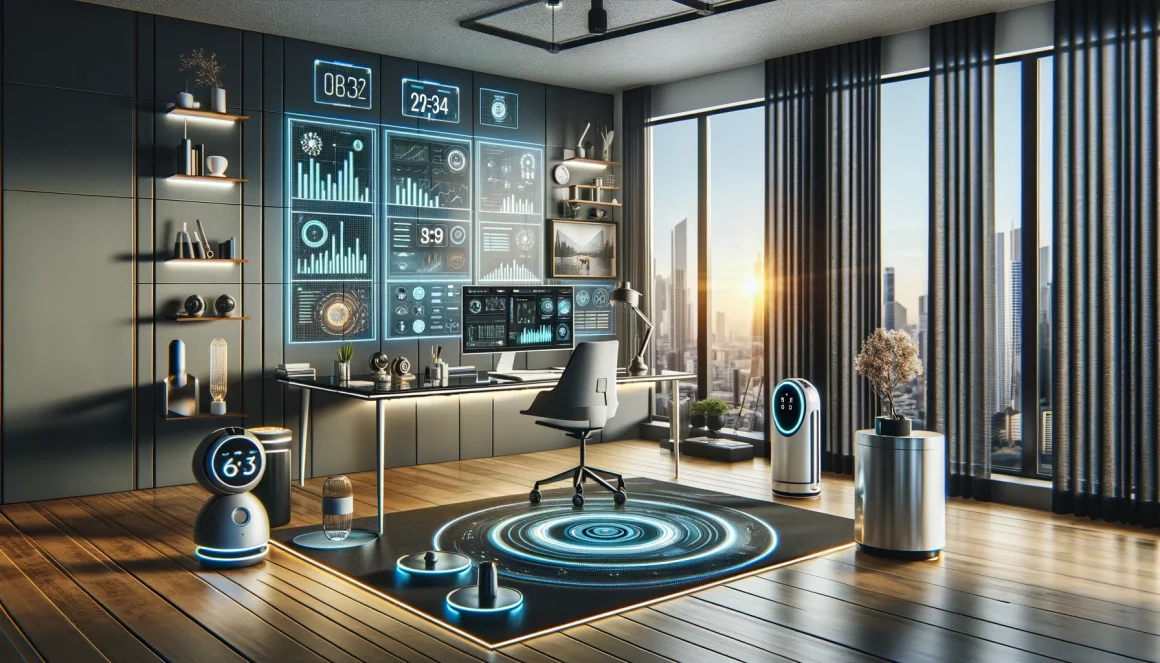Introduction
Have you ever wondered how technology will shape our homes in the near future? As we approach 2024, the world of smart home automation is set to undergo a significant transformation, bringing forth a new era of convenience, efficiency, and innovation. In this comprehensive guide, we’ll explore the cutting-edge smart home automation trends that are poised to revolutionize the way we live and interact with our homes.
According to a recent study by Statista, the global smart home market is expected to reach a staggering $135.3 billion by 2025, with a projected compound annual growth rate (CAGR) of 11.6% from 2020 to 2025. This explosive growth highlights the importance of staying updated with the latest trends in smart home automation.
In this article, we’ll delve into the most exciting developments in smart home technology, from AI-powered systems and energy-efficient solutions to enhanced security features and seamless voice control integration. Join us as we uncover the smart home automation trends that will redefine our living spaces in 2024 and beyond.
Here’s a sneak peek of what we’ll cover:
- The rise of AI-powered smart home systems
- Increased focus on energy efficiency
- Enhanced home security and surveillance
- Voice control and seamless integration
- Health and wellness in smart home automation
- Robotics and autonomous cleaning
- Sustainability and eco-friendly solutions
- DIY smart home automation kits
- Future of smart home automation
Get ready to embark on a fascinating journey into the future of smart home automation!
The Rise of AI-Powered Smart Home Systems
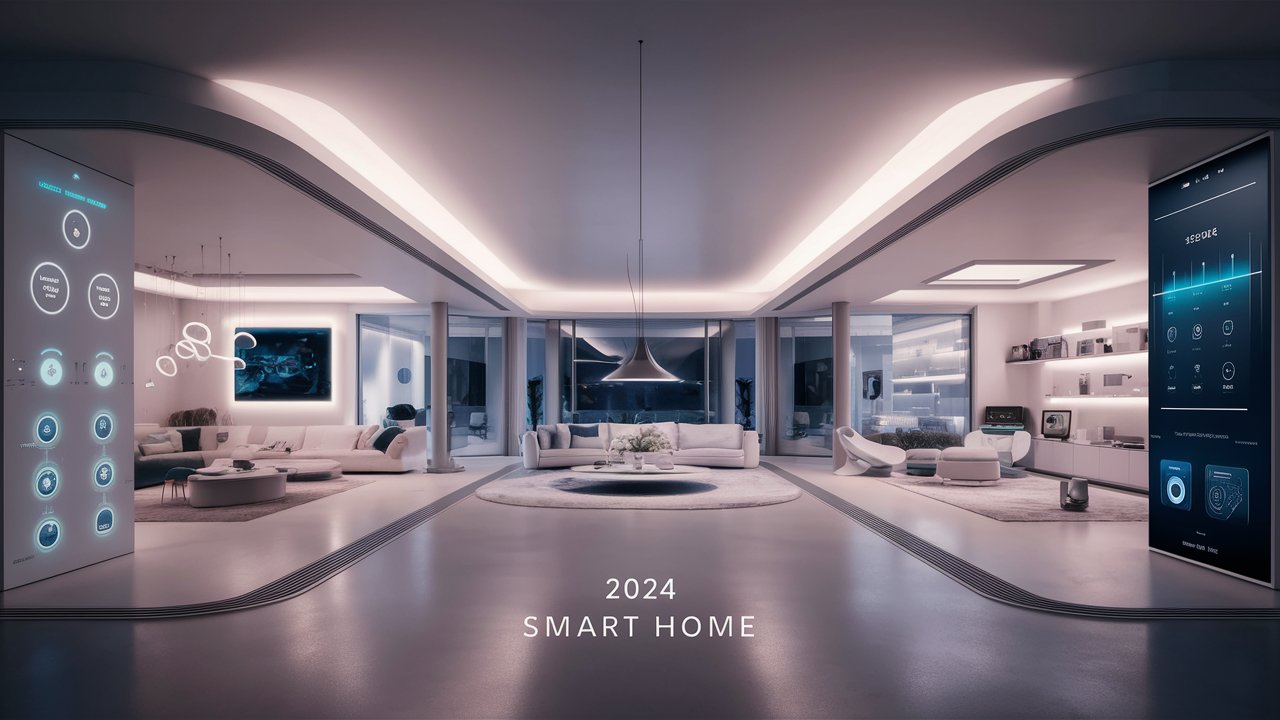

Artificial Intelligence (AI) is set to play a pivotal role in shaping the smart home automation trends of 2024. AI-powered smart home devices will revolutionize the way our homes understand and adapt to our needs, preferences, and routines. By leveraging advanced machine learning algorithms and vast amounts of data, these intelligent systems will offer unparalleled convenience and personalization.
One of the key benefits of AI-powered smart home devices is their ability to learn and anticipate our needs. Imagine a smart thermostat that not only adjusts the temperature based on your schedule but also learns your comfort preferences over time, ensuring an optimal living environment without any manual intervention. Similarly, AI-driven lighting systems will adapt to your daily routines, creating the perfect ambiance for every occasion.
Some of the most exciting AI-driven smart home automation trends to watch out for in 2024 include:
- Smart Temperature Control: AI-powered thermostats will analyze your habits, weather patterns, and home insulation to create personalized temperature profiles that maximize comfort and energy efficiency.
- Predictive Maintenance: Smart home systems will use AI to monitor the health of your appliances and predict potential issues before they occur, allowing for proactive maintenance and reduced downtime.
- Personalized Lighting and Ambiance: AI-powered lighting systems will learn your preferences and automatically adjust the brightness, color temperature, and hue to create the perfect atmosphere for any activity or time of day.
As AI continues to advance, we can expect even more sophisticated and intuitive smart home automation solutions that cater to our unique lifestyles and needs.
Increased Focus on Energy Efficiency
In 2024, energy efficiency will be a top priority for smart home automation trends. With growing concerns about climate change and rising energy costs, homeowners will increasingly seek out smart home solutions that help them reduce their energy consumption and lower their utility bills.
Smart home automation trends in 2024 will focus on innovative ways to conserve energy without compromising comfort or convenience. Some of the key developments in this area include:
- Smart Thermostats with Advanced Learning Capabilities: Next-generation smart thermostats will leverage AI and machine learning to create highly personalized temperature schedules based on your habits, preferences, and home’s unique characteristics. These advanced systems will optimize energy usage while ensuring maximum comfort.
- Automated Window Treatments for Optimal Insulation: Smart blinds, shades, and curtains will automatically adjust based on the time of day, weather conditions, and room occupancy to regulate temperature and minimize energy waste. These intelligent window treatments will help keep your home cool in the summer and warm in the winter, reducing the load on your HVAC system.
- Energy Monitoring and Management Systems: Comprehensive energy monitoring and management systems will provide real-time insights into your home’s energy consumption, identifying areas of inefficiency and suggesting actionable steps to reduce waste. These systems will seamlessly integrate with your smart home devices, allowing you to track and control energy usage from a single platform.
By embracing these energy-efficient smart home automation trends, homeowners can significantly reduce their carbon footprint and enjoy long-term savings on their energy bills.
Enhanced Home Security and Surveillance
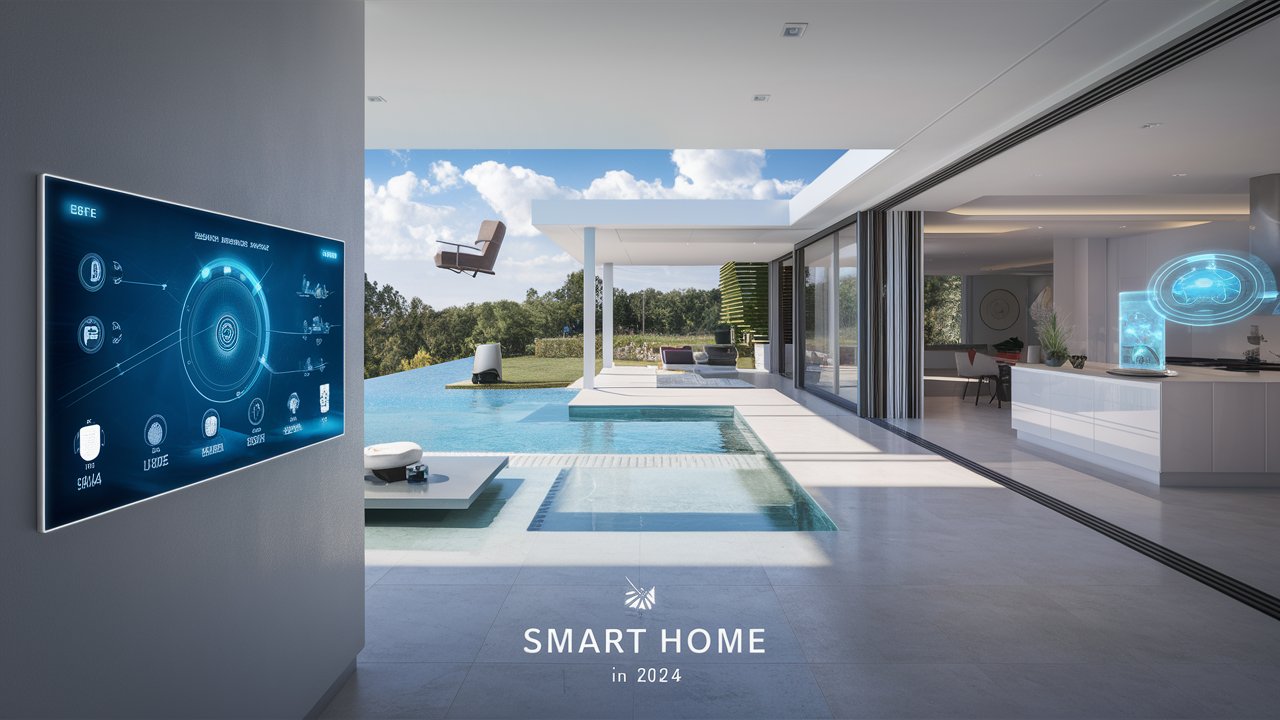

As smart home automation continues to evolve, home security and surveillance will remain a top priority for homeowners in 2024. The latest trends in smart home security will leverage cutting-edge technologies to provide unparalleled protection and peace of mind.
One of the most exciting developments in smart home security is the integration of advanced facial recognition technology. Smart security cameras equipped with facial recognition algorithms will be able to accurately identify family members, friends, and potential intruders, sending real-time alerts to homeowners and authorities when necessary. This technology will also enable personalized access control, granting entry to authorized individuals while keeping unwanted visitors at bay.
Another smart home automation trend in 2024 will be the seamless integration of smart locks and doorbell cameras. These devices will work in tandem to provide a comprehensive view of your home’s entry points, allowing you to monitor and control access remotely. With features like two-way audio communication, motion detection, and real-time video streaming, you’ll always be aware of who’s at your doorstep, even when you’re away from home.
AI-powered threat detection and alerts will also play a significant role in smart home security trends. Intelligent security systems will analyze data from multiple sensors and cameras to detect unusual behavior, such as suspicious movements or sounds, and promptly notify homeowners and authorities. This proactive approach to home security will help prevent break-ins and ensure a swift response in the event of an emergency.
Some key benefits of these advanced smart home security trends include:
- 24/7 monitoring and real-time alerts
- Personalized access control and visitor management
- Deterrence of potential intruders
- Seamless integration with other smart home devices
- Remote access and control via mobile apps
By embracing these cutting-edge security solutions, homeowners can enjoy unparalleled peace of mind and create a safer living environment for their families.
Voice Control and Seamless Integration
Voice control has become an integral part of smart home automation, and its popularity is set to soar even higher in 2024. As voice assistant technologies continue to advance, homeowners will enjoy even more seamless and intuitive control over their smart home devices.
One of the key smart home automation trends in voice control for 2024 is the expansion of voice assistant capabilities. Leading platforms like Amazon Alexa, Google Assistant, and Apple’s Siri will offer more sophisticated natural language processing, allowing users to interact with their smart home devices using more conversational and context-aware commands. This will make controlling your smart home feel more natural and effortless than ever before.
Another exciting development in voice control is the seamless integration across multiple devices and platforms. In 2024, smart home devices from different manufacturers will work together more harmoniously, enabling users to control their entire smart home ecosystem using a single voice assistant. This interoperability will eliminate the need for multiple apps and interfaces, streamlining the user experience and making it easier to manage your smart home.
Voice-activated home appliances and entertainment systems will also become more prevalent in 2024. From smart ovens and refrigerators to TVs and sound systems, a wide range of household devices will feature built-in voice control capabilities. Imagine being able to preheat your oven, search for recipes, or adjust your television’s volume with a simple voice command – the possibilities are endless.
Some of the benefits of these voice control trends in smart home automation include:
- Hands-free control and multitasking
- Improved accessibility for individuals with limited mobility
- Enhanced convenience and ease of use
- Seamless integration across devices and platforms
- Personalized and context-aware interactions
As voice control continues to evolve, it will become an even more integral part of our daily lives, making our homes more responsive, intuitive, and effortlessly connected.
Health and Wellness in Smart Home Automation
In 2024, smart home automation will play a significant role in promoting health and wellness, as homeowners increasingly seek out technology that supports their well-being. The rise of health-focused smart home devices will revolutionize the way we monitor and manage our physical and mental health within the comfort of our own homes.
One of the most promising smart home automation trends in health and wellness for 2024 is smart sleep tracking and optimization. Advanced sleep monitoring systems will use a combination of sensors, AI, and machine learning to analyze your sleep patterns, duration, and quality. These devices will provide personalized recommendations for improving sleep hygiene, such as adjusting room temperature, lighting, and sound levels to create the optimal sleep environment.
Another exciting development in health-focused smart home automation is the integration of air quality monitoring and purification systems. In 2024, smart home devices will be equipped with advanced sensors that detect pollutants, allergens, and other harmful particles in the air. When air quality falls below a certain threshold, these systems will automatically activate air purifiers or adjust ventilation to ensure a healthy and breathable environment.
Smart kitchen appliances will also play a crucial role in promoting healthy meal planning and preparation. From smart refrigerators that track expiration dates and suggest recipes based on available ingredients to AI-powered ovens that optimize cooking times and temperatures for nutritious meals, these devices will make it easier than ever to maintain a healthy diet.
Some of the key benefits of these health and wellness trends in smart home automation include:
- Personalized health insights and recommendations
- Improved sleep quality and duration
- Enhanced indoor air quality and respiratory health
- Simplified meal planning and healthy eating habits
- Increased overall well-being and quality of life
By embracing these smart home automation trends focused on health and wellness, homeowners can create living spaces that actively contribute to their physical and mental well-being.
Robotics and Autonomous Cleaning
Advancements in robotics and autonomous cleaning technologies will be a major smart home automation trend in 2024. As our lives become increasingly busy, homeowners will seek out more efficient and intelligent solutions to keep their homes clean and tidy with minimal effort.
One of the most significant developments in this area will be the introduction of more advanced and efficient robot vacuums. These next-generation devices will feature improved navigation systems, enhanced suction power, and the ability to detect and avoid obstacles with greater precision. Some robot vacuums will even be equipped with AI-powered image recognition, allowing them to identify and prioritize high-traffic areas or specific types of debris for targeted cleaning.
In addition to robot vacuums, 2024 will see the rise of robot mops and window cleaners. These specialized cleaning devices will use similar navigation and sensing technologies to autonomously clean floors and windows, saving homeowners time and effort on these tedious household chores. With the ability to schedule cleaning routines and control these robots via voice commands or mobile apps, maintaining a spotless home will be more convenient than ever.
Some of the key benefits of these smart home automation trends in robotics and cleaning include:
- Increased cleaning efficiency and thoroughness
- Time-saving and hands-free cleaning experience
- Customizable cleaning schedules and routines
- Integration with other smart home devices and voice assistants
- Improved indoor air quality and allergen reduction
As robotics and autonomous cleaning technologies continue to advance, they will become an essential part of the smart home ecosystem, enabling homeowners to enjoy a cleaner, healthier living environment with minimal effort.
Sustainability and Eco-Friendly Solutions
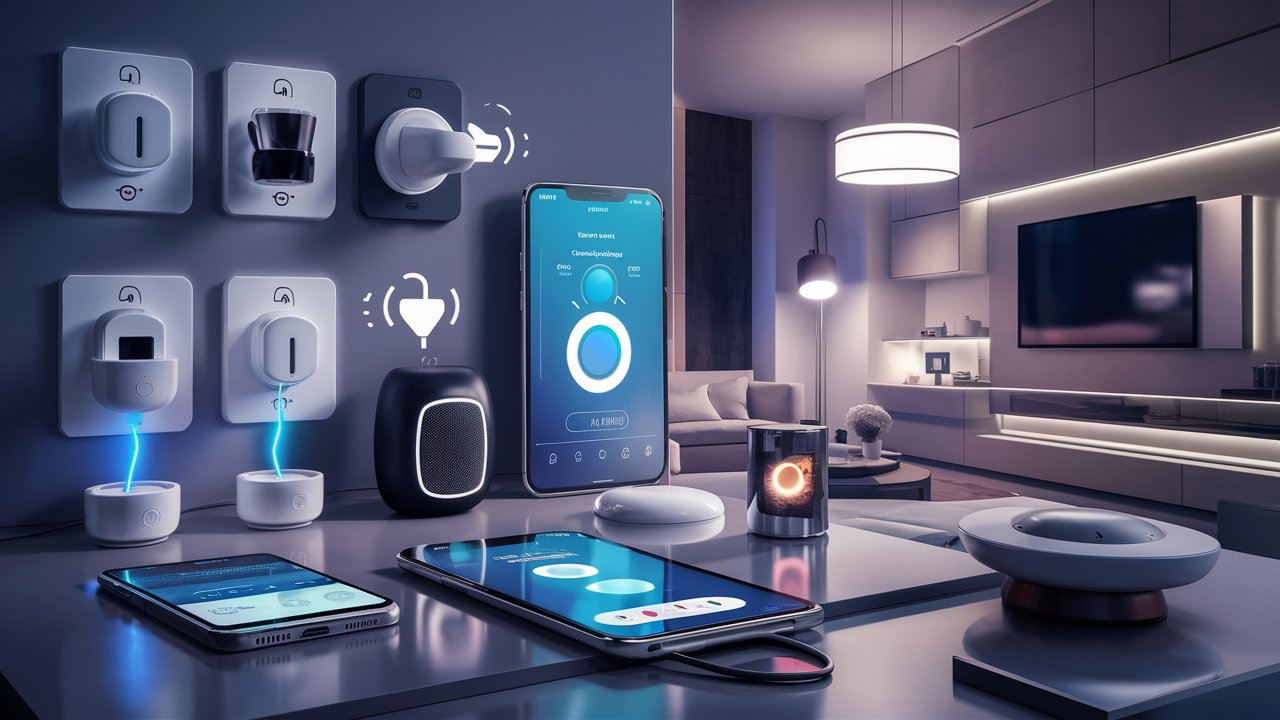

As environmental consciousness continues to grow, sustainable and eco-friendly solutions will be a key focus of smart home automation trends in 2024. Homeowners will increasingly seek out technologies that help them reduce their carbon footprint, conserve resources, and create a more environmentally responsible living space.
One of the most exciting developments in this area is the integration of renewable energy sources into smart home systems. In 2024, more homes will feature solar panels, wind turbines, or other forms of clean energy generation, seamlessly integrated with smart home automation platforms. These systems will optimize energy production, storage, and consumption, allowing homeowners to minimize their reliance on grid-based electricity and reduce their energy bills.
Smart water management and conservation will also be a significant trend in eco-friendly smart home automation. Intelligent irrigation systems will use weather data, soil moisture sensors, and plant-specific watering schedules to optimize outdoor water usage, reducing waste and ensuring healthier gardens and landscapes. Indoors, smart water meters and leak detection systems will monitor consumption, identify potential issues, and provide insights on how to conserve water more effectively.
In addition to energy and water management, sustainable smart home automation trends will focus on the use of eco-friendly materials in smart home devices. Manufacturers will increasingly prioritize the use of recycled, biodegradable, and low-impact materials in the production of smart home gadgets, reducing the environmental burden associated with these devices. Some smart home products may even feature modular designs, allowing for easier repairs, upgrades, and recycling at the end of their lifespan.
The benefits of these sustainable and eco-friendly smart home automation trends include:
- Reduced carbon footprint and environmental impact
- Lower energy and water bills –
- Increased use of renewable energy sources
- Optimized resource conservation and waste reduction
- Healthier and more sustainable living environments
- Support for global sustainability efforts and initiatives
By embracing these eco-friendly smart home automation trends, homeowners can contribute to a greener future while enjoying the benefits of a more sustainable and efficient living space.
DIY Smart Home Automation Kits
As smart home automation becomes more widely adopted, the demand for user-friendly and accessible solutions will continue to grow. In 2024, DIY smart home automation kits will be a major trend, empowering homeowners to create their own customized smart home setups without the need for extensive technical knowledge or professional installation.
These DIY kits will feature modular, plug-and-play components that can be easily connected and configured using intuitive mobile apps or web-based interfaces. Homeowners will be able to start with a basic setup and gradually expand their smart home ecosystem as their needs and preferences evolve. This flexibility and scalability will make smart home automation more appealing to a wider range of users, including those with limited budgets or technical expertise.
Some of the key benefits of DIY smart home automation kits in 2024 will include:
- User-Friendly Setup and Customization: DIY kits will feature step-by-step guides, visual interfaces, and pre-configured automation routines, making it easier than ever for users to set up and customize their smart home devices.
- Modular and Expandable Systems: With modular components and standardized communication protocols, DIY smart home kits will allow users to mix and match devices from different manufacturers, creating a truly personalized and adaptable smart home experience.
- Affordable Pricing for Wider Adoption: By eliminating the need for professional installation and offering a range of price points, DIY smart home automation kits will make this technology more accessible to a broader audience, accelerating the adoption of smart home solutions.
As DIY smart home automation kits continue to evolve, they will play a crucial role in democratizing this technology and empowering homeowners to create the smart living spaces of their dreams.
Future of Smart Home Automation


As we look beyond 2024, the future of smart home automation is filled with exciting possibilities and potential advancements. The convergence of artificial intelligence, the Internet of Things (IoT), and other emerging technologies will drive innovation and shape the way we interact with our homes in the years to come.
One of the key enablers of future smart home automation will be the widespread adoption of 5G networks. With its ultra-fast data transfer speeds and low latency, 5G will enable seamless communication between a vast array of smart home devices, allowing for more responsive and immersive experiences. This enhanced connectivity will also pave the way for new applications and services, such as high-quality video streaming, remote healthcare monitoring, and immersive virtual reality experiences within the home.
Another significant development in the future of smart home automation will be the rise of edge computing. By processing data locally on smart home devices, rather than relying on cloud-based servers, edge computing will enable faster response times, improved data privacy, and reduced dependence on internet connectivity. This localized data processing will be particularly beneficial for applications that require real-time decision-making, such as security systems and energy management.
However, the future of smart home automation also presents some challenges and concerns that will need to be addressed. Data privacy and security will remain a top priority, as the increasing number of connected devices and the sensitive nature of the data they collect raise the stakes for protecting homeowners’ personal information. Manufacturers, developers, and regulators will need to work together to establish robust security standards and practices to maintain user trust and mitigate potential risks.
Interoperability between different brands and platforms will also be a critical issue in the future of smart home automation. As the number of smart home devices and ecosystems continues to grow, ensuring seamless communication and compatibility between them will be essential for a cohesive and user-friendly experience. Industry-wide efforts to develop open standards and protocols will be necessary to achieve true interoperability and avoid fragmentation within the smart home market.
Despite these challenges, the future of smart home automation holds immense promise. As technology continues to advance and evolve, our homes will become increasingly intelligent, adaptive, and attuned to our needs and preferences. From energy-efficient living spaces and personalized comfort to enhanced security and wellness, the smart homes of the future will redefine the way we live and interact with our surroundings.
Conclusion
As we’ve explored throughout this article, the smart home automation trends of 2024 are set to revolutionize the way we live and interact with our homes. From AI-powered systems and energy-efficient solutions to enhanced security features and seamless voice control, these cutting-edge technologies will bring unprecedented levels of convenience, comfort, and efficiency to our daily lives.
As homeowners, embracing these smart home automation trends not only means enjoying the benefits of a more connected and intelligent living space but also contributing to a more sustainable and environmentally responsible future. By adopting energy-efficient practices, eco-friendly materials, and renewable energy sources, we can collectively reduce our carbon footprint and create a greener world for generations to come.
Moreover, the rise of DIY smart home automation kits and the increasing accessibility of these technologies will empower more individuals to create their own customized smart home setups, tailored to their unique needs and preferences. As smart home automation becomes more widely adopted, we can expect to see a surge in innovation, with new applications and use cases emerging across various aspects of our lives.
Looking beyond 2024, the future of smart home automation is filled with exciting possibilities and potential advancements. As we continue to navigate the challenges and opportunities presented by this rapidly evolving field, one thing is clear: the smart homes of tomorrow will be more intelligent, intuitive, and responsive than ever before, transforming the way we live, work, and play.
So, whether you’re an early adopter or just beginning to explore the world of smart home automation, now is the perfect time to embrace these transformative technologies and start building the home of your dreams. By staying informed about the latest trends, investing in the right solutions, and prioritizing security and sustainability, you can create a living space that is not only smarter but also more comfortable, efficient, and in tune with your unique lifestyle.
